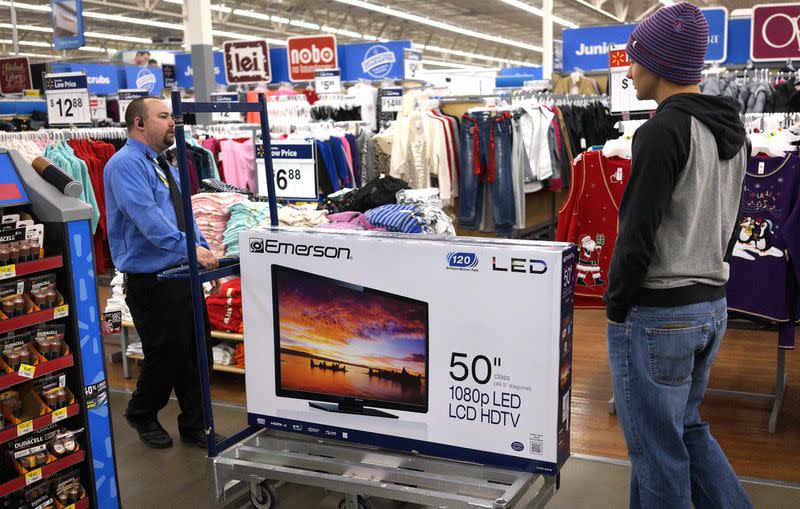Third-quarter U.S. economic growth strongest in 11 years
By Lucia Mutikani
WASHINGTON (Reuters) - The U.S. economy grew at a 5.0 percent clip in the third quarter, its quickest pace in 11 years and the strongest sign yet that growth has decisively shifted into higher gear.
Some of the strength appears to have been sustained, with other data on Tuesday showing consumer spending rising solidly in November, offsetting surprisingly weak durable goods orders.
The reports further set the U.S. economy apart from the rest of the world, where growth is sputtering or activity shrinking.
"Our economy is firing on most cylinders, whereas the global economy is essentially in dire need of a spark," said Ryan Sweet, a senior economist at Moody's Analytics in West Chester Pennsylvania.
In revising up its third-quarter gross domestic product estimate, the Commerce Department cited stronger consumer and business spending than previously assumed. It was the fastest pace since the third quarter of 2003.
Previously, the economy was reported to have expanded at a 3.9 percent annual rate. Growth has now been revised up by a total of 1.5 percentage points since an initial estimate in October.
Coupled with a hearty 4.6 percent advance in the prior three months, the economy has now experienced the two strongest back-to-back quarters of growth since 2003. Underscoring the firming fundamentals, growth in domestic demand was revised up to a 4.1 percent pace, the fastest in nearly four years.
Wall Street had expected growth would be raised to only a 4.3 percent rate.
U.S. and European shares rose as the data reassured investors that the U.S. economic expansion could buoy the global economy and that recent declines in oil prices to 5-1/2-year lows were a boon for consumers.
The Dow Jones industrial average (.DJI) broke through 18,000 points for the first time and the S&P 500 (.SPX) set a new intraday high. Prices for U.S. Treasury debt fell, while the dollar reached a fresh eight-year high against a basket of currencies and oil prices gained.
WEAK ORDERS
In a second report, the Commerce Department said non-defence capital goods orders excluding aircraft, a closely watched proxy for business spending plans, were unchanged in November after a decline of 1.9 percent in October.
Economists, who had expected a strong rebound, largely shrugged off the data, which was at odds with sturdy readings on industrial production and fairly upbeat factory surveys.
"We think this report paints an unrealistically bad picture of the current orders environment and payback is likely," said Tim Quinlan, an economist at Wells Fargo Securities in Charlotte, North Carolina.
In a third report, the Commerce Department said consumer spending, which accounts for more than two-thirds of U.S. economic activity, rose 0.6 percent in November after gaining 0.3 percent in October.
Economists raised their fourth-quarter consumer spending estimates by as much as four-tenths of a percentage point, but mostly left their GDP growth forecast unchanged between a 2.2 percent and 2.8 percent rate, given the apparent weakness in business investment.
A rapidly strengthening labour market and lower gasoline prices are boosting consumer outlays, which should help to cushion the economy from slowing growth in China and the euro zone, and a recession in Japan. It should also ensure sufficient momentum to keep the Federal Reserve on course to start raising interest rates by mid-2015.
Consumer spending grew at a 3.2 percent pace in the third quarter, a sharp upward revision from the previously reported 2.2 percent rate, partly due to stronger healthcare spending.
Growth in business investment was raised by 1.8 percentage points to an 8.9 percent rate.
Inventories were also revised higher, with restocking now being neutral to growth instead of being a mild drag. But that means inventories could undercut output in the fourth quarter.
(Reporting by Lucia Mutikani; Editing by Chizu Nomiyama and Andrea Ricci)


